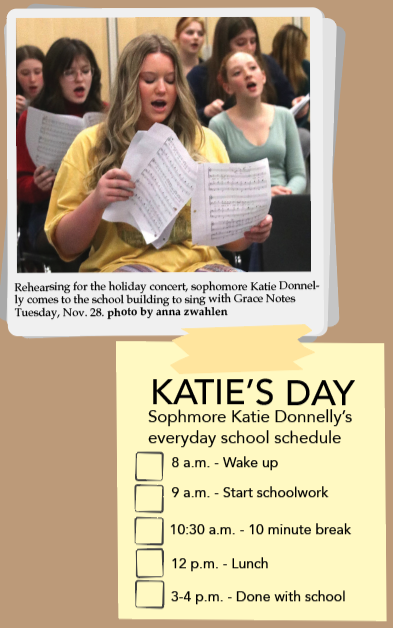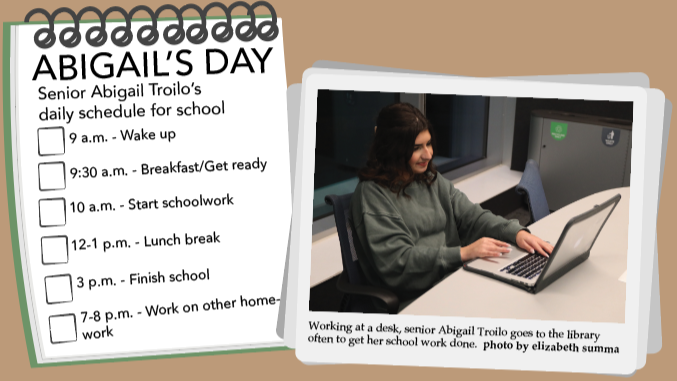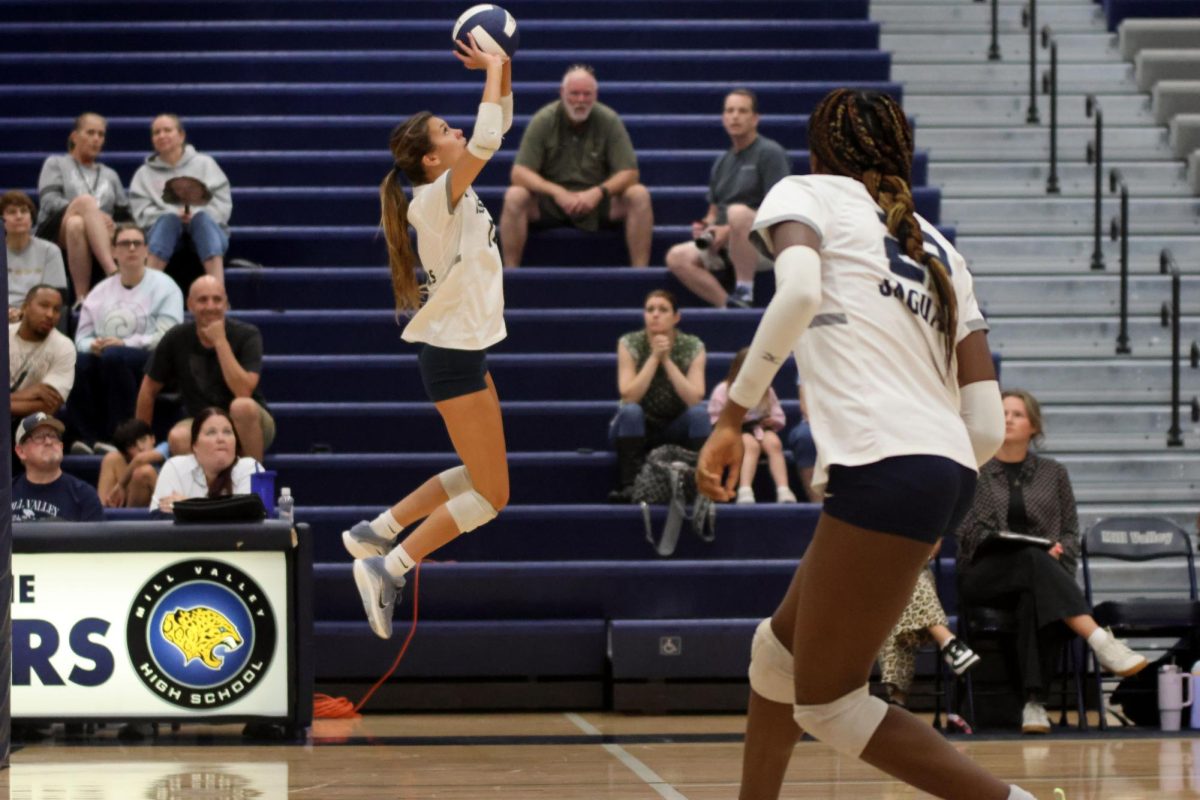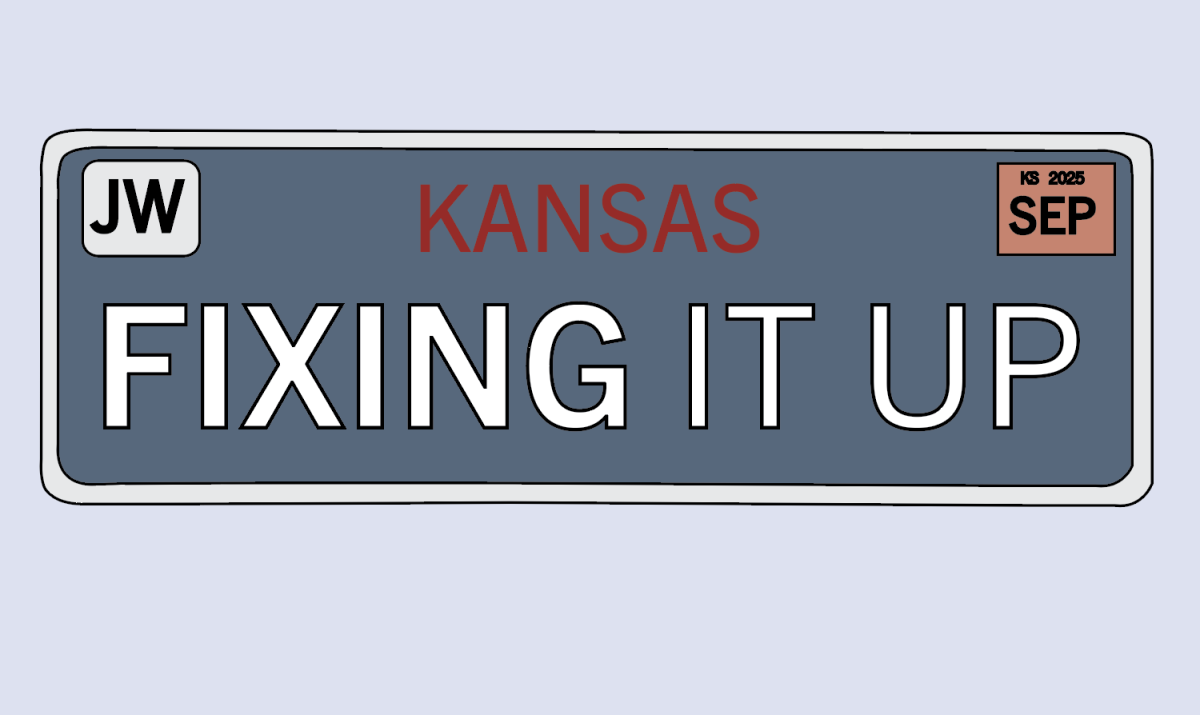Every day, senior Abigail Troilo starts her four hour school day at 10 a.m.. Upon hearing this, the average student would likely assume Troilo is homeschooled, but in reality she is one of the 21 students that are part of the school’s virtual education program.
The program allows students to complete their coursework from home through Edgenuity. Though they have a teacher who manages their work, there are no class instructors for the classes students are enrolled in. Students must learn the content through entirely virtual instruction consisting of videos, texts and other online content. According to assistant principal Deb Jaeger, there are many reasons a student might choose to go online.

“Usually students have a medical reason, like they’ve had surgery or some sort of condition where they just can’t come to school so they do classes online,” Jaeger said. “We have students with mental health issues, where they just can’t attend in person.”
Senior Abigail Troilo switched to virtual school in November of her junior year. Though there were some things she liked about traditional school, Troilo wanted to do school in a way that better suited her needs.
“I liked Mill Valley for a while, but at some point, I just felt like it wasn’t for me anymore,” Troilo said. “It all went back to Zoom in 2020 when we did online. I’ve always felt like that was better for me.”
Sophomore Katie Donnelly, who made the switch to the virtual program in October, felt similarly.
“I was getting done with a lot of the stuff in school way quicker, so I would have a lot of free time during the day,” Donnelly said. “It was easier to go online because it was self paced.”
Although online school did exist during the Covid-19 pandemic, Edgenuity is very different. Donnelly said that she was initially surprised to learn she wouldn’t be using Zoom for her classes. According to Jaeger, students still must be active learners in order to reach the program progress requirements.
“[The virtual students] are required to be online so many hours a day, just like if they were in school, and the Edgenuity program tracks their progress,” Jaeger said. “It sets a goal like they have this many weeks to complete a class, so they have to meet certain percentages each day.”
Despite its differences from the online school that many students know from the Covid-19 pandemic, Donnelly enjoys it, saying that her school day is much less strict in terms of time.
“I like being able to wake up at the time that I want to wake up,” Donnelly said. “I like being done within three hours for the day.”
The freedom of the virtual program does also have its drawbacks. For Troilo, this is because of its lack of a consistent routine.
“[In some ways being online] is harder because if you’re someone that gets distracted easily and you need more of a routine, probably in person is better for you,” Troilo said. “But if you are able to take breaks and you’re able to create your own routine, I would say online is good as long as you’re good at organizing and getting your stuff done.”
Trolio also cites that virtual students do not have the same built-in time off from school that in-person students have, making it more difficult to take time off from schoolwork.

“It’s harder because if you go on vacation you still have to do that work, so it’s not like you can just take a break,” Troilo said. “I don’t get breaks on weekends. I still have work, regardless if I get it done or not. If I do it ahead of time then I don’t have work on weekends, but I don’t really get fall break or winter break or spring break.”
Despite the many differences, participation in clubs and activities is one thing that virtual students can still do just like their in-person peers. Donelly is still a member of the Grace Notes, so she attends in-person class for choir.
“It’s kind of weird walking around school without a backpack,” Donnelly said. “But I just go in through the front office and I wait until the bell rings and then I just walk around like I’ve been there all day.”
One of virtual school’s greatest drawbacks is the isolation that can come from working from home constantly, according to both Donnelly and Troilo. To improve this, Donnelly would propose creating small ways for students to socialize.
“I feel like I’d make a little group where you can meet up once in a while to get help so you can be with people every once in a while,” Donnelly said.
Ultimately, Troilo likes the stress-free environment of virtual school and believes it has benefited her learning.
“When I’m online, I get to take my time doing things,” Troilo said. “I don’t have to rush. It’s just less stressful for me. I can just solely learn and not have to worry about anything else.”











